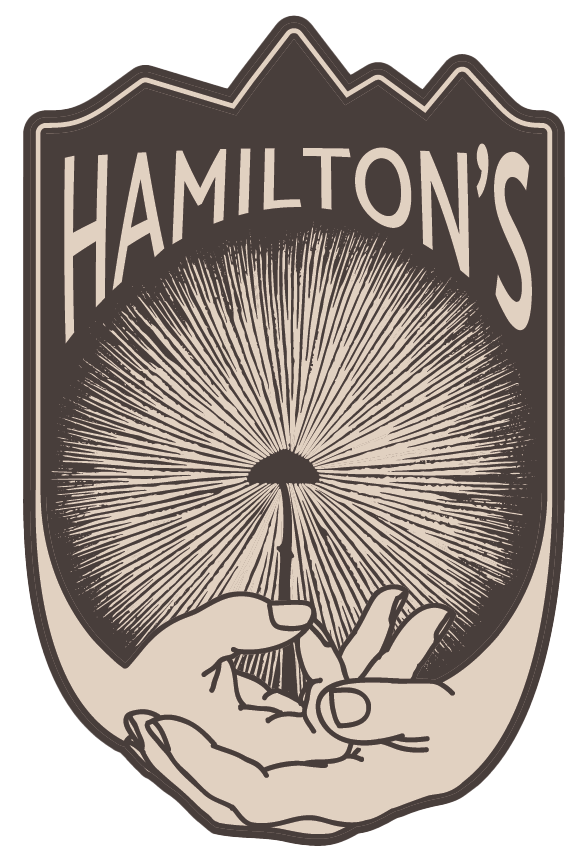This mycology training will lay the foundations of knowledge of mushrooms: how to identify them, pick them, cook them...
It is aimed at professionals in the food trades who wish to develop new culinary experiences, at those in the forest who want to understand the role of fungi, and in general to all nature lovers who want to feast their taste buds and fill their eyes!
The alpine forests are full of delicious wild mushrooms, you just have to learn how to find them, recognize them and prepare them to enjoy them.
This initiation is a nature workshop accessible without prior skill, and recommended to all those who wish to experience a first approach to practical mycology before embarking on an autodidact in the field, to gain self-confidence and their ability to pick and cook. safely.
Objectives
– Learn to identify edible mushrooms
– Understand the theoretical bases of mycology
– Discover some preparation and cooking techniques
Public: Accessible to all.
Location: In the French Alps (Vercors, Belledonne, or Écrins, depending on the weather).
Duration: Oct 2-8, 2022
Included:
– Nights in a room at the lodge (Sunday, Monday, Tuesday, Thursday and Friday evenings)
– Fifteen meals (from Monday to Friday morning noon and evening)
– Collective equipment (teaching material, first aid kit, etc.)
– Your accompanying expert in mycology – Your first aid companion
– Activity insurance
Not included:
– Your personal journeys to and from the course site
– Your personal equipment (list sent upon registration)
– Your personal insurance
Additional information:
– Group of 4 to 10 participants (plus two guides).
– Accessible to French and English speakers.
– Adult participants, in good mental and physical health.
Programme:
Arrival possible from Sunday evening on site, individual meal to be planned.
Day 1 (Monday)
– Presentation of the team and the program, meeting with the other participants around a picnic taken from the bag.
– Short hike (2h30 to 4h depending on the terrain), medium gradient, accessible to all.
– Introductory workshops in mycology:
- Approach the kingdom of fungi: habitat, substrates, anatomy...
- Collection rules and risk prevention
- Observation and identification of large groups of fungi
– Monitoring and presentation of the active components, minerals and vitamins of the fungi.
– Meals and night at the lodge.
Day 2 (Tuesday)
– Hike (3h to 5h depending on the terrain), medium gradient, accessible to all.
– Introductory workshops in mycology:
- Identification keys (with the works of D. Arora, and G. Eyssartier & P. Roux)
- Biology of fungi (groups, substrates, mycelial network and trophic relationship…)
- Study of poisonous mushrooms and how to avoid possible confusion
– Meals and night at the lodge.
Day 3 (Wednesday)
– Great hike (4h to 7h depending on the terrain), significant drop.
– Initiation workshops at the bivouac and wildlife:
- Orientation and navigation in the forest and in the mountains
- Survival strategy and distress signaling
- Approach to the alpine ecosystem, edible and medicinal plants
– Collection meal cooked over a wood fire, and night in a refuge or under the stars.
Day 4 (Thursday)
– Observation walk (2h to 4h depending on the terrain), medium elevation, accessible to all.
– Introductory workshops in mycology:
- Preparation, cooking and storage of mushrooms
- Approach to medicinal virtues and pharmacopoeia theory
- Vigil and discussion around the works of P. Stamets, and F. Martin.
– Meals and night at the lodge.
Day 5 (Friday)
– Observation walk (2h to 4h depending on the terrain), low elevation, accessible to all.
– Introductory workshop to mycology:
- Bibliography, study methodology and research of scientific data
- Synthesis and delivery of certificates.
– Visit to a local distillery and tasting
– End of the session around 5:00 p.m.
– Meals and night at the gîte (for those who prefer to take the road on Saturday morning)
Pedagogical assessment of the mycology training
Over these five days, you will have learned to:
- Identify and consume at least six different tasty mushrooms
- Use a book and its keys to determination
- Study the traditional medicinal uses of mushrooms
- Know the integration fungi in their environment (saprotrophy, parasitism, symbiosis, etc.)
– Differentiate between types of fungi (humicole, lignicole, corticolous, etc.)
– Prepare and cook your harvest in complete safety
– Study alpine mycology as an autodidact
Some mushrooms that we could observe
– Tinder (Fomes fomentarius)
– Amanita fly-killer (Amanita muscaria)
– Honey-colored armillaria (Armillaria mellea)
– Red-footed boletus (Neoboletus erythropus)
– Bordeaux boletus (Boletus Edulis)
– Golden clavary (Ramaria aurea)
– Hairy coprin (Coprinus comatus)
– Coulemelle (Macrolepiota procera)
– Chanterelle (Cantharelus cibarius)
– Delicious milk cap (Lactarius deliciosus)
– Ox tongue (Fistulina hepatica)
– Common morel (Morchella esculenta)
– Russula leaf-dead (Russula xerampilina)
– Scaly Moth (Pholiota Squarrosa)
– Oyster Mushroom (Plurotus ostreatus)
– Tufted polypore (Grifola frondosa)
– Sulfur polypore (Laetiporus sulphureus)
– Meadow rose (Agaricus campestris)
– Trumpet of the dead (Craterellus cornucopioides)
– Pearl puffball (Lycoperdon perlatum)

